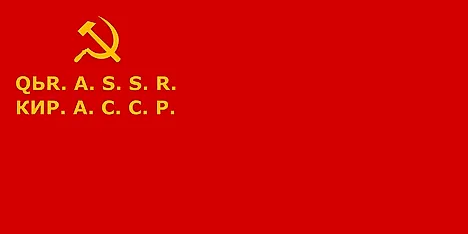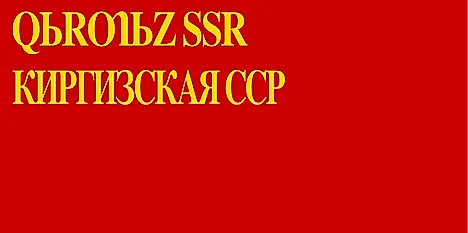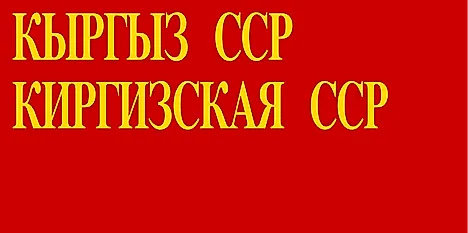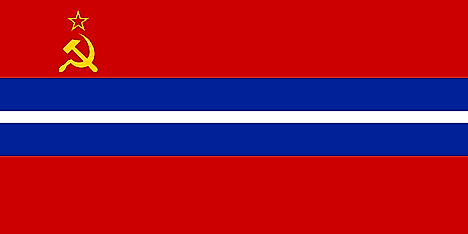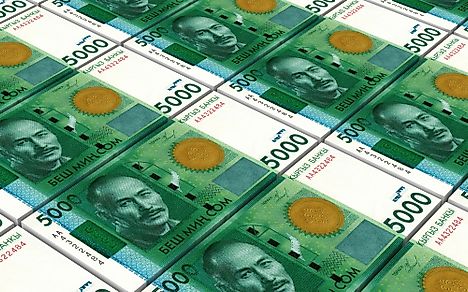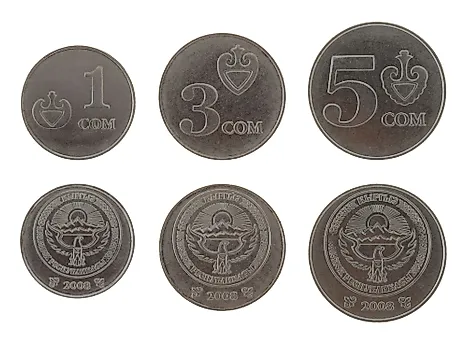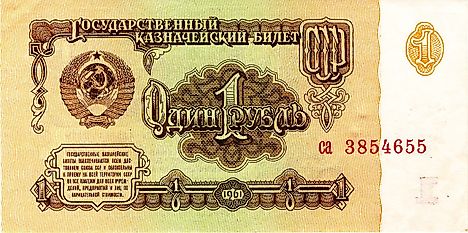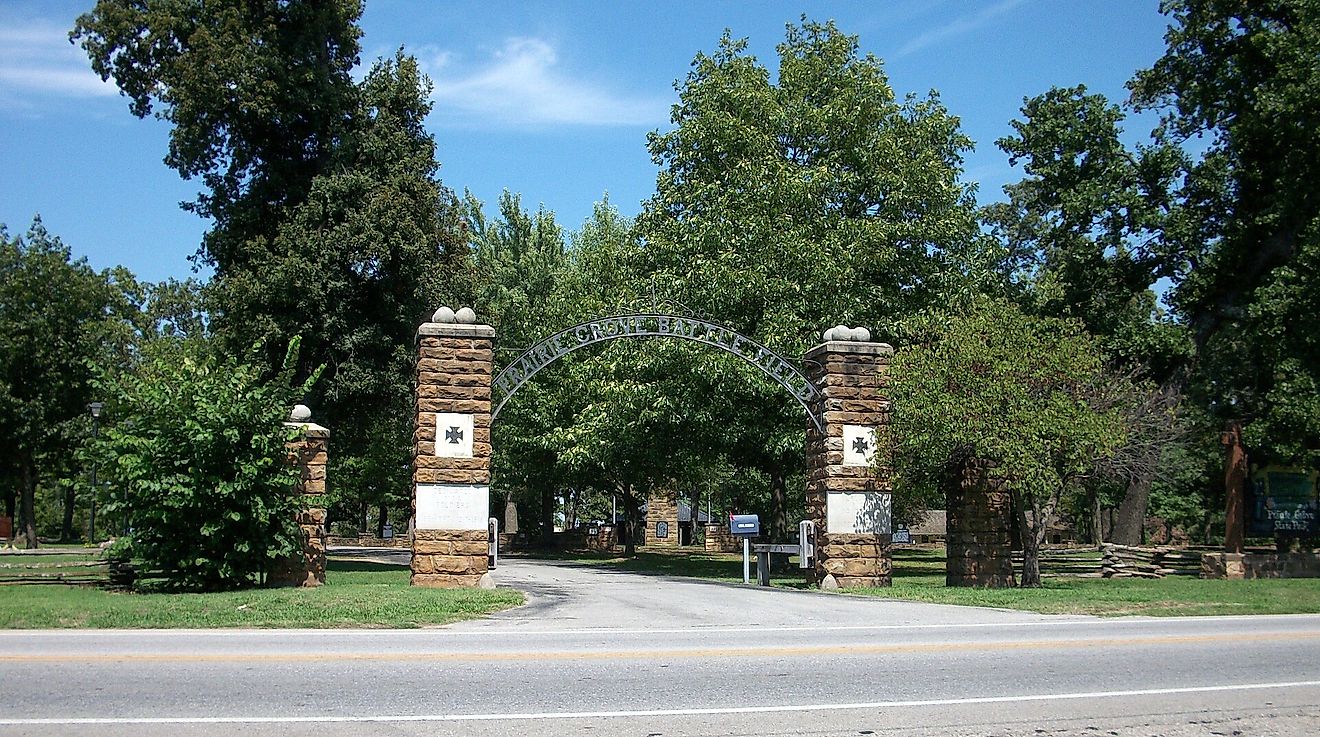Flags, Symbols, & Currencies of Kyrgyzstan
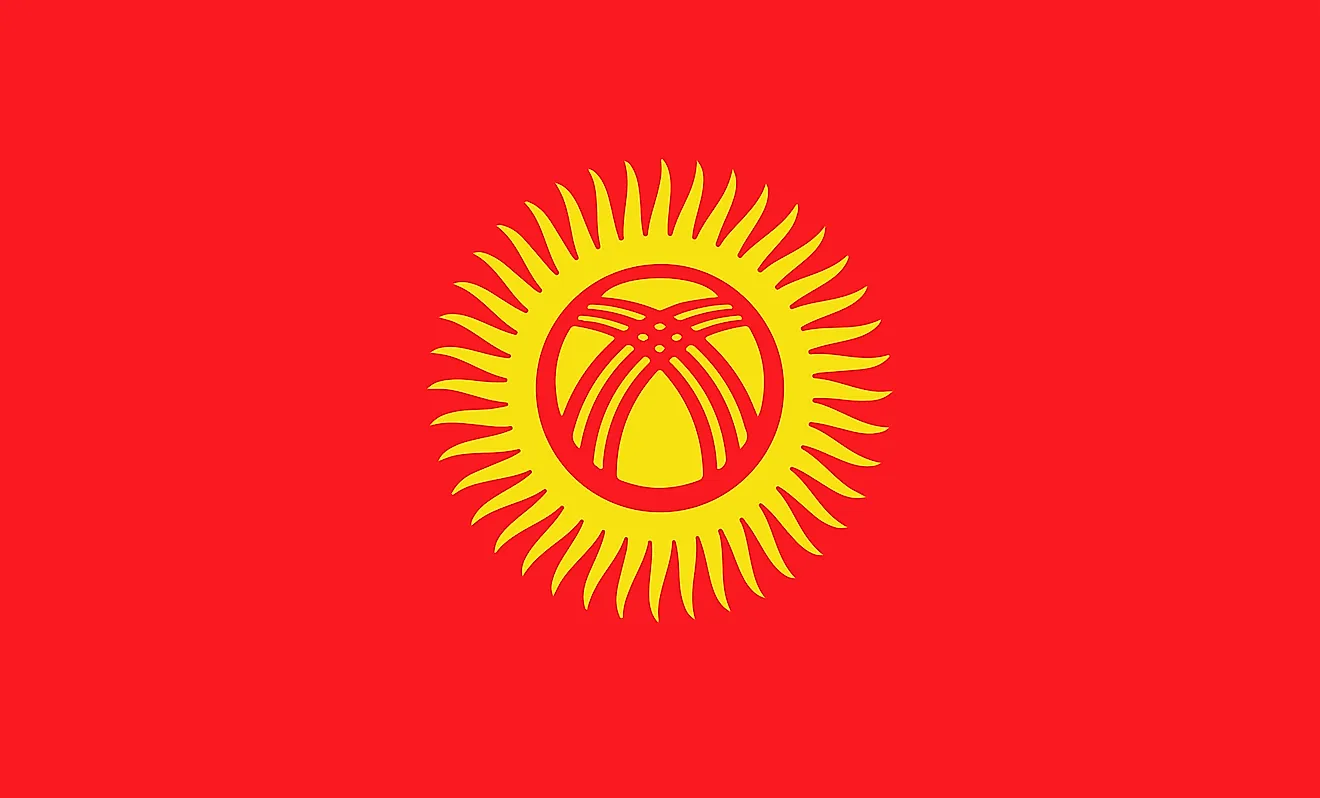
he flag of Kyrgyzstan has a red field with a golden sun at the center which has forty evenly spaced sun rays. The sun has three crisscrossing laths traversing a sphere which is a depiction of their traditional tent known as a yurt. The country adopted their flag in 1992, just seven months after they gained their independence, to replace the Soviet Socialist Republic’s flag. The red color was inspired by the banner lifted by Manas, a traditional hero who helped unite all their tribes in one state.
The symbols and colors of Kyrgyzstan’s flag carry regional, political, and cultural meanings. The red color symbolizes courage and bravery. Red was the color of the banner used by Manas, the legend of the famous Kyrgyz epic. It has been the national color of Kyrgyzstan for a long time. The sun is a symbol of wealth, peace, an eternity of existence and light. The forty rays on the sun stand for all the forty tribes which Manas united to fight the Mongols. The forty rays also represent the number of Manas’s followers. The national flag of Kyrgyzstan has a height to length proportion of 3:5
The middle of the sun has a stylized illustration of the Tunduk (roof) on the Yurt (traditional Kyrgyz tent) when viewed from the inside. Even though the yurts are less used today, the addition of the tent on their flag stands for the unity of space and time and the origin of life. It stands for the local’s home and hearth and this includes their territory.
Some Kyrgyzs do not support the meaning of the symbols and color of their flag. For example, the country is ethnically diverse, and some of the minority groups include the Dungans and Uzbeks. Manas defeated these groups, and the idea of the country’s national emblem being associated with Manas does not sit well with them. Another source of criticism is the red field. Some individuals believe that it reminds them of their violent history while others see the color as a lingering reminder of communism.
History of the Flag
Under the Soviet Union, Kyrgyzstan was the Union Republic known as Kirghizia. Kirghizia was established on December 5, 1936, and they adopted their flag in 1953. The flag of Kirghizia was the Soviet Union’s flag with two blue stripes and a white band at the center which they used until 1991. The country declared their independence on August 31, 1991, which was four months before the collapse of the Soviet Union. After gaining their independence, they continued using a different version of the flag of Kirghizia which did not have the golden hammer, bow, and star for seven months before adopting their new flag on March 3, 1992.
Proposals for the Replacement of Kyrgyzstan’s Flag
The government of Kyrgyzstan created a commission which helped examine numerous flag changing proposals a few years ago. The head of this commission observed how their flag was an object of disunity and conflict among the locals and the fact that the government of Kyrgyzstan did not want their national symbol to be a cause of division.
Kyrgyzstan Coat of Arms:
Symbols of Kyrgyzstan
National Coat of Arms of Kyrgyzstan
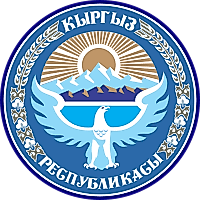
The emblem of Kyrgyzstan was adopted in 1992. The emblem circular and dominated by color blue. It features a white falcon (Ak Shumkar) with wings wide open. The falcon is a symbol of nobleness and purity. Behind the falcon is a stretched land with two peaks; the snowy Ala-too Mountain and Issyk-Kul. Agolden sun rises behind the mountains and shines on Kyrgyzstan's sacred land. Cotton and wheat circle the border of the emblem, with the name of the country scripted above and below. The lighter shade of blue is the color of courage and generosity. The wheat, cotton and rising sun are leftover elements of the USSR.
National Anthem
- Anthem Title: National Anthem of the Kyrgyz Republic
- Music composer: Nasır Davlesov and Qalıy Moldobasanov
- Lyricist: Jamil Sadıqov and Eşmambet Quluyev
- Date of Adoption: December 18, 1992
Kyrgyzstan adopted the current national anthem in 1992, following the disintegration of the Soviet Union. The words for the anthem were written by Jamil Sadıqov and Eşmambet Quluyev and the music composed by Nasır Davlesov and Qalıy Moldobasanov. The national anthem was adopted after Supreme Council of Kyrgyzstan's resolution. It is a common practice for civilians to put their right hands over their chests when the anthem is being performed.
Кыргыз Республикасынын Мамлекеттик Гимни (Cyrillic script)
Ак мөңгүлүү аска
зоолор, талаалар,
Элибиздин жаны
менен барабар.
Сансыз кылым Ала-
Тоосун мекендеп,
Сактап келди биздин
ата-бабалар.
Кайырма:
Алгалай бер, кыргыз
эл,
Азаттыктын
жолунда.
Өркүндөй бер, өсө
бер,
Өз тагдырың
колуңда.
Байыртадан бүткөн
мүнөз элиме,
Досторуна даяр
дилин берүүгө.
Бул ынтымак эл
бирдигин ширетип,
Бейкуттукту берет
кыргыз жерине.
Кайырма....
Аткарылып элдин
үмүт, тилеги,
Желбиреди
эркиндиктин желеги.
Бизге жеткен ата
салтын, мурасын,
Ыйык сактап
урпактарга берели.
Кайырма.....
National Anthem of the Kyrgyz Republic
White-capped rocky cliffs
and steppes
Are equal to the soul of
our people.
For countless centuries,
our fathers
Have lived in and kept the
Ala-Too.
Chorus:
March forward, Kyrgyz
people,
On the way to freedom!
Prosperity and progress,
Your own fate is in your
hands!
Long ago, our friendly
people
Completed and gave us
the clasp to nature.
We acquired an accord of
harmony
And peace over the
Kyrgyz land.
Chorus...
Our hopes and aspirations have been
fulfilled,
Our people wave the flag
of freedom.
The tradition of our
fathers came to us,
Let generations keep our
holy heritage.
Chorus.....
The Currency of Kyrgyzstan is the Kyrgyzstani som
On May 10, 1993, Kyrgyzstan adopted the Kyrgyzstani som as its new currency in and a replacement for the Soviet ruble. The Kyrgyzstani som is broken up into 100 tyiyn, and its name means "pure" in the Kyrgyz language. It referred to the pure gold used in the early forms of Kyrgyzstan currency. The currency was initially issued in the form of banknotes, with an exchange rate of 1 som to 200 Soviet rubles. The economy of Kyrgyzstan was immensely affected by the breakup of the Soviet Union, namely because the nation lost a significant market for its products after the dissolution.
Som coins
The country did not produce coins until 2008 when demand for the coins intensified, as small scale traders needed the coins for their transactions. Brass-coated steel coins were the first coins to be released to the public in denominations of 10 and 50 tiyin. Nickel-coated 1, 3 and 5, som coins were also issued in the same year. In today’s economy, coins are hardly used in any transactions in Kyrgyzstan, as high rates of inflation have led to the loss of value of the coins.
Security Concerns
Due to the risk of counterfeit notes, in 2009 the National Bank of Kyrgyzstan issued new banknotes in denominations of 20, 50 and 100 som. The newly issued banknotes had improved features which made them more difficult to counterfeit. The bank also released a new banknote worth 5000 Som.
Historical Currencies of Kyrgyzstan
The Soviet ruble was the official currency used by all members of the Soviet Union. The currency was produced by the Federal State Unitary Enterprise. Although all 15 members of the Soviet Union shared a common currency, each had a local name for the ruble. One ruble was equivalent to 100 kopeks. The currency came in the form of coins and banknotes. Certain coins produced in the early 20th century were made of 90% gold or 90% silver. The Soviet ruble was freely used in all the states of the Soviet Union. The use of a single currency led to increased trade within the Soviet Union. However, the Soviet ruble went through seven revaluations between 1917 and 1991. One such revaluation was done immediately after the end of World War II. This process, in which the new ruble replaced ten old rubles, was needed to reduce the amount of currency in circulation. The revaluations led to a significant loss of wealth for the citizens of the Soviet Union. The ruble remained in circulation within the Soviet Union even after the breakup of the Union in 1991. In 1993, Russia stopped circulating the Soviet ruble. The National Bank of Kyrgyzstan took up the role of minting and issuing currency in Kyrgyzstan after the Soviet Union ruble ceased circulation.
